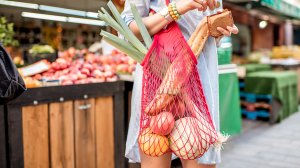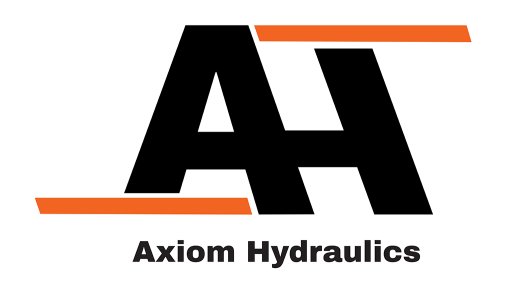Steenhuisen vows more targeted approach to resolving food security challenge
About 20-million South Africans, or 63% of households, are food insecure, Agriculture Minister John Steenhuisen revealed at the unveiling of the results of the National Food and Nutrition Security Survey (NFNSS) on October 9
The Department of Agriculture, Land Reform and Rural Development commissioned the Human Sciences Research Council (HSRC) to conduct the survey across all nine provinces of South Africa between 2021 and 2023.
The aim of the survey was to generate baseline data that government can use to provide targeted support interventions to households that are food insecure.
Despite South Africa having numerous food programmes in place and being regarded as food secure at national level, millions of people still experience hunger on a daily basis.
Steenhuisen said not enough resources on government’s part had been allocated to food access programmes, and that government had more of a “shotgun” approach than a targeted approach to its support in this regard historically.
With the Government of National Unity having adopted evidence-based policymaking, and the report providing a baseline for where more effort was needed, Steenhuisen said government could now provide assistance on a granular, district level across departments.
“Budgets and interventions can now be implemented in a focused manner to deal with this problem,” he said, adding that his department was already coordinating with other departments to alleviate hunger in areas where it was most needed; however, a 'whole-of-society' approach would be necessary to fully solve the problem.
This will include efforts to lower food waste.
South Africa produces about 31-million tons of food every year, but a third of this is wasted. The majority of food is lost and wasted before retail.
Meanwhile, Consultancy PwC points out that South Africans are seemingly buying less food owing to pressure on their buying power, with households having to spend money carefully on electricity, transport and other living expenses.
The organisation says higher agricultural output is necessary, including from family-owned smallholder agribusinesses. Steenhuisen agrees.
PwC also suggests that food companies improve traceability information to determine the effectiveness of supply chains and reduce food waste.
Steenhuisen confirms that his deprtment is working on the development of a 2024 to 2029 National Food and Nutrition Security Plan, with provincial plans also being in the works for more targeted efforts towards food system transformation.
DEEP DIVE
In conducting the survey, the HSRC visited more than 40 000 households across the country to conduct interviews and distribute questionnaires asking people about the types and amounts of food they consume, as well as how they access food.
Over and above regular access to food, people must eat different types of food to stay healthy. To measure the different dimensions of food and nutrition security, the HSRC used key internationally accepted food security indicators such as the Household Food Insecurity Access Score (HFIAS), the Household Hunger Score (HHS), the Food Consumption Score and the Household Dietary Diversity Score (HDDS).
In terms of the HFIAS, South Africa has a national score of 8.3 out of 27. A score of one is regarded as food secure; between two and eight as ‘mildly food insecure’; and nine upwards as moderately to severely food insecure.
About 17% of households scored 18 or more, indicating people have to cut back on meal size or the number of meals consumed, and often run out of food.
Another 26% of households were moderately food insecure, frequently consuming low-quality, undesirable food and occasionally reducing the size or number of meals.
The mildly food insecure households, which comprised 19.2% of survey respondents, worried about not having enough food and may have been unable to eat preferred foods – but rarely ate undesirable food and did not need to cut back on meals.
More than 36% of households were considered food secure and rarely worried about not having enough food.
In terms of the HHS indicator, just under 80% of households reported that they experienced little to no hunger, while 15.3% experienced moderate hunger and 5.6% severe hunger.
While these indicators might have indicated that food insecurity in South Africa is not acute at national level, provincial and district scores reveal crisis scenarios in some provinces such as the North West.
The HFIAS showed that more than half of households in this province are moderately food insecure (30%) or severely food insecure (25%). The HHS in North West indicates that 10% of households experienced severe hunger, which is nearly double the national HHS average.
The HRSC finds that South African households consumed more than six out of 12 food groups, in terms of the HDDS indicator, which suggests above-average dietary levels.
About 80% of the respondents consumed highly diverse diets, or more than six food groups, while 14.9% consumed medium dietary diversity at between four and five food groups and 4.3% consumed low diverse diets with three or fewer food groups.
In terms of the FCS, however, which considers dietary diversity, food frequency and the relative nutritional importance of different food groups, less than two-thirds of households consumed acceptable diets.
About 23% of households are at the borderline and could fall into the category of consuming an unacceptable diversity of goods if no actions are taken to help them improve their diets.
Nationally, more than 18% of households consume poor diets and survive on nutrient-poor food groups such as cereals, condiments, sugars, oils and fats.
The HSRC says demographic and socioeconomic factors all influence households’ ability to access nutritious food, including access to land, resources such as irrigation, social grants, household size, markets, household head’s education level and involvement in agricultural production.
Some of the HSRC’s recommendations include the promotion of domestic food production at household level, focused investment into agrifood processing centres to create an enabling environment for commercial food production, investment in food markets and food banks at produce markets strategically located close to vulnerable households, and rezoning efforts for land under traditional authorities so that some can be reserved for agricultural production.
Article Enquiry
Email Article
Save Article
Feedback
To advertise email advertising@creamermedia.co.za or click here
Comments
Press Office
Announcements
What's On
Subscribe to improve your user experience...
Option 1 (equivalent of R125 a month):
Receive a weekly copy of Creamer Media's Engineering News & Mining Weekly magazine
(print copy for those in South Africa and e-magazine for those outside of South Africa)
Receive daily email newsletters
Access to full search results
Access archive of magazine back copies
Access to Projects in Progress
Access to ONE Research Report of your choice in PDF format
Option 2 (equivalent of R375 a month):
All benefits from Option 1
PLUS
Access to Creamer Media's Research Channel Africa for ALL Research Reports, in PDF format, on various industrial and mining sectors
including Electricity; Water; Energy Transition; Hydrogen; Roads, Rail and Ports; Coal; Gold; Platinum; Battery Metals; etc.
Already a subscriber?
Forgotten your password?
Receive weekly copy of Creamer Media's Engineering News & Mining Weekly magazine (print copy for those in South Africa and e-magazine for those outside of South Africa)
➕
Recieve daily email newsletters
➕
Access to full search results
➕
Access archive of magazine back copies
➕
Access to Projects in Progress
➕
Access to ONE Research Report of your choice in PDF format
RESEARCH CHANNEL AFRICA
R4500 (equivalent of R375 a month)
SUBSCRIBEAll benefits from Option 1
➕
Access to Creamer Media's Research Channel Africa for ALL Research Reports on various industrial and mining sectors, in PDF format, including on:
Electricity
➕
Water
➕
Energy Transition
➕
Hydrogen
➕
Roads, Rail and Ports
➕
Coal
➕
Gold
➕
Platinum
➕
Battery Metals
➕
etc.
Receive all benefits from Option 1 or Option 2 delivered to numerous people at your company
➕
Multiple User names and Passwords for simultaneous log-ins
➕
Intranet integration access to all in your organisation




















